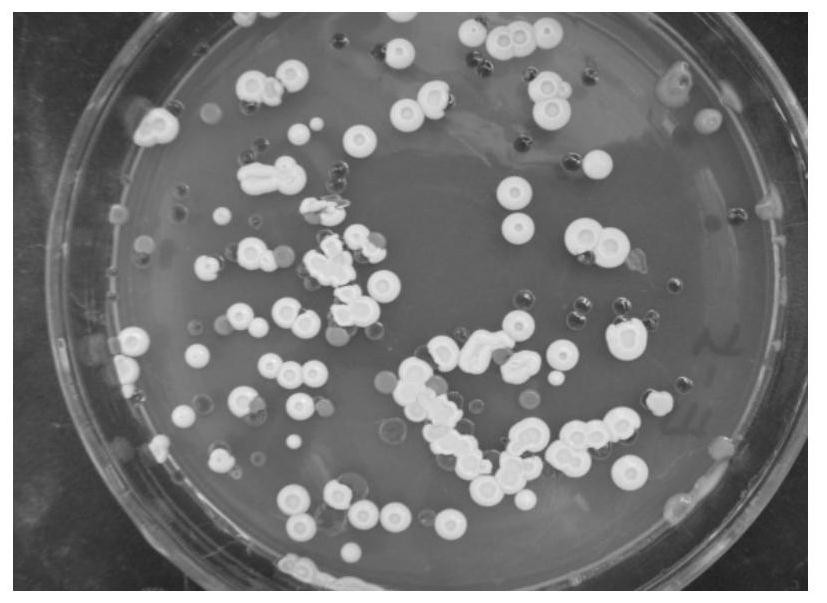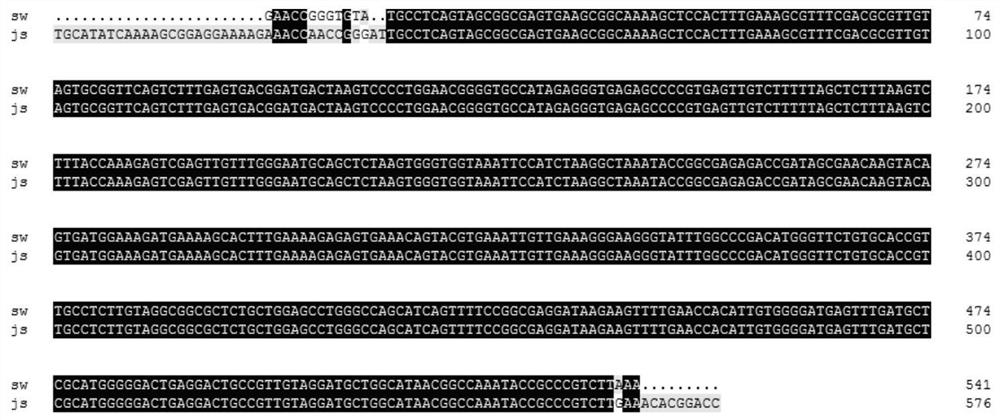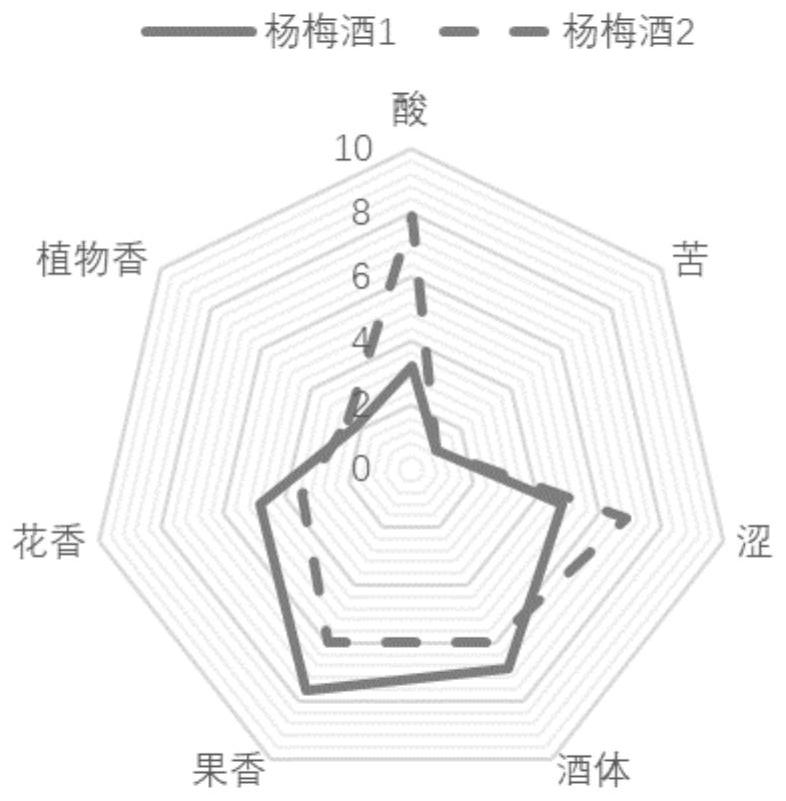A kind of fruit wine acid-reducing bacterial strain and its application
A fruit wine and acidity technology, applied in the preparation of fungi, alcoholic beverages, microorganisms, etc., can solve the problems of no suitable strains, poor taste, uncoordinated wine body, etc., to improve aroma and flavor, improve quality, and modify fruit wine flavor Effect
- Summary
- Abstract
- Description
- Claims
- Application Information
AI Technical Summary
Problems solved by technology
Method used
Image
Examples
Embodiment 1
[0084] Embodiment 1: Screening and identification of acid-reducing strains of bayberry fruit wine
[0085] Specific steps are as follows:
[0086] 1. Isolation, screening and purification of acid-reducing strains
[0087] (1) Accurate multi-point sampling to take samples (5.00g each of water chestnut species bayberry and Dongkui species bayberry orchard soil, 2.00g each of bayberry branches and leaves, and 10.00g each of bayberry fruit), and place the obtained samples in 250mL conical flasks respectively , add 100 mL of physiological saline (0.9% NaCl solution) and a little glass beads, and place them in a shaker at 30° C., 200 r / min and shake for about 2 hours after labeling, and let stand. Accurately aspirate 5mL of supernatant and respectively insert it into pre-sterilized yeast enrichment medium (50mL culture medium in each 250mL conical flask), and place it in a shaker at 30°C and 200r / min for 1 day. A pretreated culture medium was obtained.
[0088] (2) respectively c...
Embodiment 2
[0097] Example 2: Brewing of bayberry fruit wine
[0098] The bayberry fruit wine was brewed with the water chestnut species of Zhejiang Xianju as the raw material, as the starting sample for biological acid reduction.
[0099] The brewing process of bayberry wine is as follows:
[0100] (1) Preparation of Candida diversa Z3 and Saccharomyces cerevisiae suspensions
[0101] Preparation of Candida diversa Z3 bacterial suspension: The Candida diversa Z3 obtained in Example 1 was inoculated into YPD liquid medium, and cultured at 30°C to obtain a bacterial concentration of 1×10 6 cfu / mL of bacterial suspension.
[0102] Preparation of Saccharomyces cerevisiae suspension: Saccharomyces cerevisiae D254 was inoculated into 5% sucrose water, activated at 37°C, and the bacterial concentration was 1×10 6 cfu / mL bacterial suspension;
[0103] (2) select fresh bayberry fruit, break and make bayberry pulp broken liquid;
[0104] (3) Primary fermentation: inoculate the Candida diversa...
Embodiment 3
[0119] Example 3: Brewing of blueberry fruit wine
[0120] The blueberry fruit wine was brewed with Suzhou rabbit eye blueberry as the raw material as the starting sample for biological acid reduction.
[0121] The brewing process of blueberry wine is as follows:
[0122] (1) select fresh blueberry fruit, crush to make blueberry pulp broken liquid;
[0123] (2) Primary fermentation: inoculate the Candida diversa Z3 bacterial suspension obtained in the step (1) of Example 2 into the above-mentioned blueberry pulp broken liquid, and ferment at 20° C. for 24h;
[0124] (3) Enzyme treatment: add pectinase with a concentration of 30 mg / L and SO (60 mg / L), and add sucrose until the total sugar content is 200 g / L; after standing for 12 hours, crude juice is obtained;
[0125] (4) skin residue separation after fermentation: the crude fruit juice mixture obtained in step (3) is filtered;
[0126] (5) secondary fermentation: inoculate the Saccharomyces cerevisiae D254 bacterial suspe...
PUM
 Login to View More
Login to View More Abstract
Description
Claims
Application Information
 Login to View More
Login to View More - R&D
- Intellectual Property
- Life Sciences
- Materials
- Tech Scout
- Unparalleled Data Quality
- Higher Quality Content
- 60% Fewer Hallucinations
Browse by: Latest US Patents, China's latest patents, Technical Efficacy Thesaurus, Application Domain, Technology Topic, Popular Technical Reports.
© 2025 PatSnap. All rights reserved.Legal|Privacy policy|Modern Slavery Act Transparency Statement|Sitemap|About US| Contact US: help@patsnap.com



